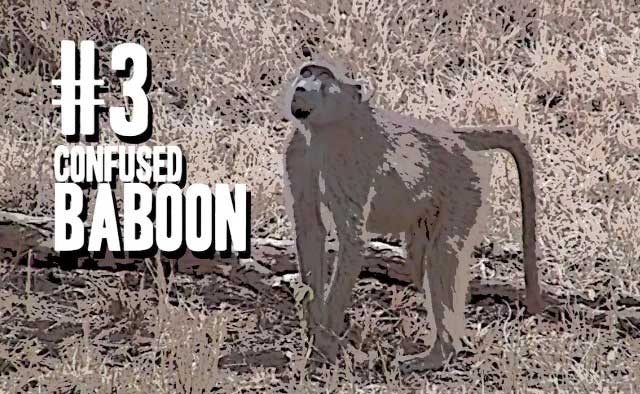Hanging with the animal paparazzi in South Africa
September 16, 2010 by Rolf Potts
If there’s one experience that stands out from the week I spent in South Africa, it was the time I sat in a safari-equipped Land Rover and watched two hippos get into a theatrical territorial showdown while my guide, Lembi, held forth for nearly 30 minutes on how it’s possible to assassinate people by slipping crocodile brains into their beer. For some reason, this mix of drama, absurdity, and charismatic megafauna encapsulated everything I’d hoped to find in the African backcountry.
Until this trip I had never been on a safari before. I’d been to places like Uganda and Ethiopia and Sudan (both as a journalist and a vagabonder) but I’d never gone to a game preserve and taken part in the most classic of Africa travel activities. As I’m sure is the case with many Americans, Africa was one of the first faraway lands I dreamed of visiting as a kid — the animals were the draw, of course — though my first few visits to the continent were focused on people and culture. On this trip I decided to leave the cities and towns and seek out the kind of wildlife that had captured my imagination as a child. Hence, my week in South Africa was less rooted in sober biological inquiry than in the simple desire to stare at amazing animals and hear cool stories about how they live.
The first leg of this journey took me seven hours northeast of Johannesburg, where I visited Kruger National Park and a number of private game reserves. South Africa is a huge country (roughly the size of Texas and California combined), and the avocado and orange-growing country I passed through en route to the safari reminded me of landscapes I’d seen in the American West. Winter was just ending in that part of Africa, and some of the mornings were so chilly I was forced to wear all my clothes at once. BootsnAll World Adventures set me up with a stay at Thornhill Safari Lodge near the Orpen Gate of Kruger, and I spent my days scanning the landscape for exotic critters while riding around in custom-designed wildlife-viewing vehicles (imagine a cross between a Land Rover and a small amphitheater).
Though I had a couple of different safari guides in this part of the country, my favorite was Lembi, a good-humored fellow who’d grown up near Kruger National Park, and shared all kinds of stories about how African animals live. In addition to detailing how crocodile brains can be deadly when mixed with beer, Lembi told me how (a) the elk-like waterbok have the power to make themselves smell like turpentine, which acts as an effective lion-repellent; (b) baboons have an affinity for eating newborn impalas; (c) ground ostrich eggshells can be made into a tea that cures the gout; and (d) if an elephant doesn’t shake the bugs off a tree before eating the bark, tiny ants might crawl up the elephant’s trunk, burrow into his brain cavity, and drive him to suicidal insanity.
As Lembi drove my fellow safari-goers and me through Kruger National Park, it was interesting to note which animals attracted the most attention from the various safari trucks. Zebras didn’t merit much attention, nor did impalas (unless they were being eaten by some other, more popular animal), but lions and rhinos and elephants invariably attracted a small knot of Land Rovers and rubbernecking tourists. In the African bush, value judgments on which animals are the most important seem to be pegged to the same system as red-carpet celebrities in Hollywood: The more people you have photographing an individual animal, the important that animal must be from a tourist perspective (and in a way, the classic African mammals are like celebrities, since they make regular TV appearances, and everyone can instantly recognize them on sight).
Along with lions, rhinos and elephants, leopards and buffalo round out what is known in safari circles as the “Big Five” — the elite group of imposing beasts that invariably attract the most attention from the animal paparazzi. Since I’m just as thrilled to see a giraffe or a wildebeest as an elephant or a buffalo, the “Big Five” distinction confused me at first — though I eventually learned that the animals in this group were selected years ago, on the basis of their deadliness to hunters. Still, I’ve never been one to trust the authority of list-based sightseeing standards, so I wound up following my whims and instincts in creating an informal tally of my personal favorite experiences in and around Kruger. At the top of my non-Big Five list were the male hippos, who — in what has to be the most endearingly adorable sign of aggression in the animal kingdom — declare their territorial intentions by facing their rivals and flipping their little tails back and forth in the water (often while pooping, so as better to spread their scent).
Check out the video above for a comprehensive take on my personal alternatives to the Big Five!
—
Note: The South Africa Safari, including my stay at Thornhill Safari Lodge came courtesy of BootsnAll World Adventures. Four days and three nights here (including all safari activities, meals, and ground transportation) starts at US$475 per person.
